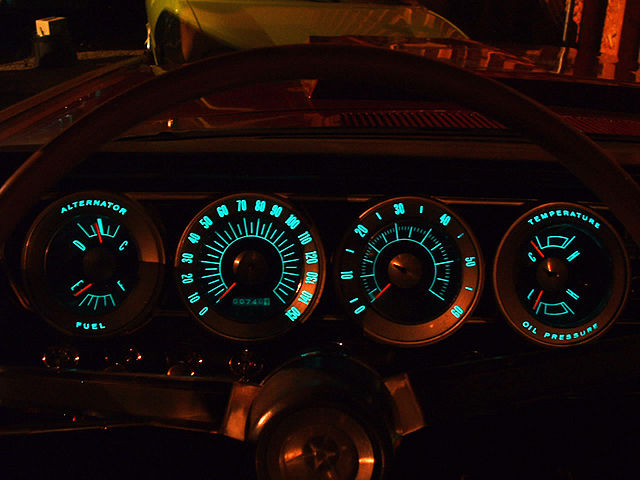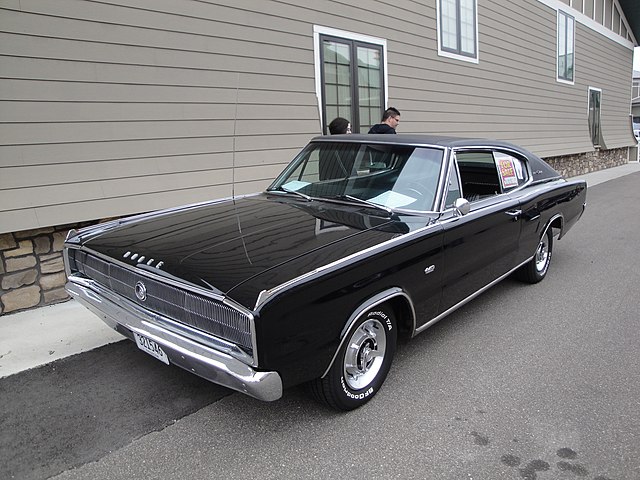
The Dodge Charger, introduced in the mid-1960s, quickly became an icon of American muscle car culture. The first generation, spanning the years 1966 and 1967, set the stage for the Charger’s long-standing legacy in both performance and design. As a symbol of American ingenuity and the spirit of the 1960s, the first-generation Dodge Charger stands as a classic emblem of speed, style, and the pursuit of performance.
This article explores the origins, design features, performance, cultural impact, and legacy of the first-generation Dodge Charger, providing insights into why it remains a celebrated classic.
Origins and Development

The idea for the Dodge Charger was born out of a desire by Dodge to introduce a car that could compete in the growing muscle car market of the 1960s. The Charger’s development was a response to the success of the Ford Mustang and the Pontiac GTO, aiming to blend performance with a distinct style. Dodge’s design team, led by Carl “Cam” Cameron, drew inspiration from the Dodge Dart GT and the Charger II concept car, which had been showcased at auto shows in 1965 to gauge public interest.
The launch of the Dodge Charger in 1966 was met with great anticipation. It was introduced as a high-performance, luxury sport coupe, targeting the segment of buyers looking for a blend of speed, power, and comfort. From its inception, the Charger was positioned as a premium offering, with Dodge aiming to set it apart from its competitors through unique design elements and superior performance specifications.
The marketing strategy for the Charger emphasized its innovative features and its position as a sporty yet luxurious vehicle. Early advertisements highlighted its fastback design, optional engine upgrades, and advanced interior features, suggesting a new level of sophistication in the muscle car market.
Design Features

The first-generation Dodge Charger is distinguished by its fastback styling, characterized by a sleek, sloping rear roofline that seamlessly merges with the trunk. This design was not only aesthetically striking but also contributed to the vehicle’s aerodynamics. The hidden headlamps, another distinctive feature, enhanced its futuristic appearance, making it stand out from other cars of the era.
Inside, the Charger boasted a luxurious interior that was ahead of its time. It featured four individual bucket seats, a full-length console from the dashboard to the rear seats, and optional features like a tachometer, air conditioning, and an AM/FM radio. The attention to detail in the interior design underscored Dodge’s intention to offer a high-performance car without compromising on comfort and luxury.
The Charger’s exterior color options and trim levels allowed buyers to customize their vehicles to a considerable degree. Available in a range of colors, from vibrant reds to subtle blues, and with different interior upholstery choices, the Charger could be tailored to suit the tastes of a diverse clientele.
Performance

The first-generation Dodge Charger was not just about looks; it was designed to perform. The base model came equipped with a 318 cubic inch (5.2-liter) V8 engine, but the true power lay in the optional upgrades. The most notable was the 426 Hemi, a 7.0-liter V8 engine that produced 425 horsepower, turning the Charger into a formidable force on the drag strip and a favorite among racing enthusiasts.
The Charger’s suspension and braking systems were designed to handle the high power output of its engines. With heavy-duty springs, shock absorbers, and brakes, the car was capable of delivering not just straight-line speed but also a commendable level of handling and stopping power for its time.
Dodge also offered the Charger with a range of transmission options, including a three-speed manual, a four-speed manual, and a three-speed automatic. This variety ensured that the car could cater to different driving preferences, from those seeking a hands-on, sporty driving experience to those preferring the comfort of an automatic transmission.
Cultural Impact

Upon its release, the Dodge Charger quickly became a symbol of American muscle car culture. Its appearance in television and movies of the era, most notably in the television show “The Dukes of Hazzard,” cemented its status as a cultural icon. The Charger’s aggressive styling and powerful performance made it a popular choice among young Americans, symbolizing freedom, rebellion, and the pursuit of speed.
The Charger also made its mark in motorsport, particularly in NASCAR, where its aerodynamic design gave it a competitive edge. Its success on the race track added to its allure, attracting car enthusiasts who valued performance and speed.
The first-generation Charger’s role in shaping the muscle car era cannot be overstated. It represented a time when car manufacturers were willing to push the boundaries of design and performance, contributing to a legacy that continues to influence the automotive industry.
Legacy and Collectibility

Today, the first-generation Dodge Charger is highly sought after by collectors and enthusiasts. Its unique blend of performance, style, and cultural significance has ensured its place in automotive history. Well-preserved or expertly restored models command high prices in the collector’s market, reflecting the enduring appeal of this classic American muscle car.
The Charger’s influence extends beyond its immediate impact in the 1960s. It set a precedent for future generations of Chargers and other muscle cars, blending luxury with performance in a way that was innovative for its time. The design cues introduced by the first-generation Charger, such as its fastback profile and hidden headlamps, have inspired automotive design long after its initial release.
The legacy of the first-generation Dodge Charger is also evident in the continued popularity of the Charger nameplate. Dodge revived the Charger in the 21st century, paying homage to its classic predecessor with modern interpretations that echo the original’s spirit of performance and design. This has introduced the Charger to a new generation of enthusiasts, bridging the gap between past and present.
Collectibility and Preservation
The collectibility of the first-generation Dodge Charger is underscored by its rarity and the nostalgia it evokes for an era of automotive innovation and cultural change. Collectors and restoration enthusiasts seek out these models for their historical significance, unique design, and the joy of driving a piece of muscle car history. The community around classic Chargers and other muscle cars is active, with clubs, shows, and online forums dedicated to the preservation and appreciation of these vehicles.
Restoring a first-generation Charger can be a labor of love, with original parts and specifications often hard to come by. Enthusiasts invest significant time and resources into bringing these cars back to their former glory, ensuring they can be enjoyed by future generations. The process of restoration not only preserves the physical vehicle but also keeps alive the skills and knowledge required to maintain classic cars.
The Dodge Charger of 1966 and 1967 remains a testament to a bold era in American automotive history. Its blend of style, power, and innovation set it apart in the muscle car era, leaving a lasting legacy that continues to captivate enthusiasts and collectors.
